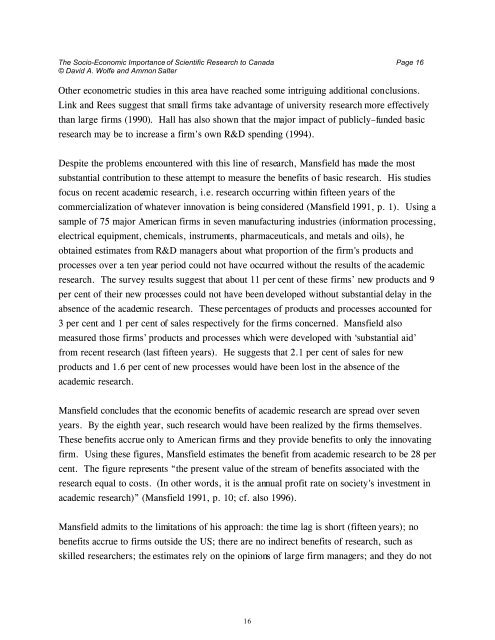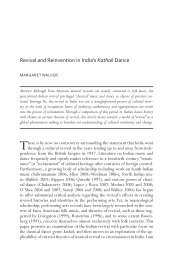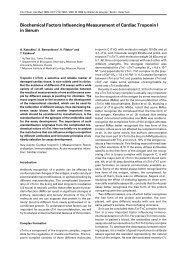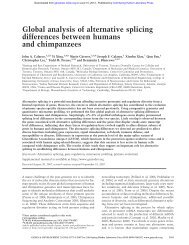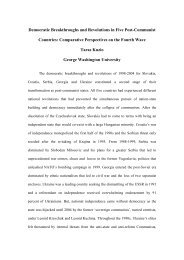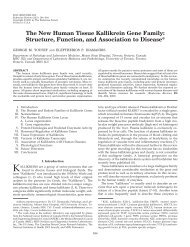The Socio-Economic Importance of Scientific Research To Canada
The Socio-Economic Importance of Scientific Research To Canada
The Socio-Economic Importance of Scientific Research To Canada
Create successful ePaper yourself
Turn your PDF publications into a flip-book with our unique Google optimized e-Paper software.
<strong>The</strong> <strong>Socio</strong>-<strong>Economic</strong> <strong>Importance</strong> <strong>of</strong> <strong>Scientific</strong> <strong>Research</strong> to <strong>Canada</strong> Page 16© David A. Wolfe and Ammon SalterOther econometric studies in this area have reached some intriguing additional conclusions.Link and Rees suggest that small firms take advantage <strong>of</strong> university research more effectivelythan large firms (1990). Hall has also shown that the major impact <strong>of</strong> publicly–funded basicresearch may be to increase a firm's own R&D spending (1994).Despite the problems encountered with this line <strong>of</strong> research, Mansfield has made the mostsubstantial contribution to these attempt to measure the benefits <strong>of</strong> basic research. His studiesfocus on recent academic research, i.e. research occurring within fifteen years <strong>of</strong> thecommercialization <strong>of</strong> whatever innovation is being considered (Mansfield 1991, p. 1). Using asample <strong>of</strong> 75 major American firms in seven manufacturing industries (information processing,electrical equipment, chemicals, instruments, pharmaceuticals, and metals and oils), heobtained estimates from R&D managers about what proportion <strong>of</strong> the firm's products andprocesses over a ten year period could not have occurred without the results <strong>of</strong> the academicresearch. <strong>The</strong> survey results suggest that about 11 per cent <strong>of</strong> these firms’ new products and 9per cent <strong>of</strong> their new processes could not have been developed without substantial delay in theabsence <strong>of</strong> the academic research. <strong>The</strong>se percentages <strong>of</strong> products and processes accounted for3 per cent and 1 per cent <strong>of</strong> sales respectively for the firms concerned. Mansfield alsomeasured those firms’ products and processes which were developed with ‘substantial aid’from recent research (last fifteen years). He suggests that 2.1 per cent <strong>of</strong> sales for newproducts and 1.6 per cent <strong>of</strong> new processes would have been lost in the absence <strong>of</strong> theacademic research.Mansfield concludes that the economic benefits <strong>of</strong> academic research are spread over sevenyears. By the eighth year, such research would have been realized by the firms themselves.<strong>The</strong>se benefits accrue only to American firms and they provide benefits to only the innovatingfirm. Using these figures, Mansfield estimates the benefit from academic research to be 28 percent. <strong>The</strong> figure represents “the present value <strong>of</strong> the stream <strong>of</strong> benefits associated with theresearch equal to costs. (In other words, it is the annual pr<strong>of</strong>it rate on society's investment inacademic research)” (Mansfield 1991, p. 10; cf. also 1996).Mansfield admits to the limitations <strong>of</strong> his approach: the time lag is short (fifteen years); nobenefits accrue to firms outside the US; there are no indirect benefits <strong>of</strong> research, such asskilled researchers; the estimates rely on the opinions <strong>of</strong> large firm managers; and they do not16


